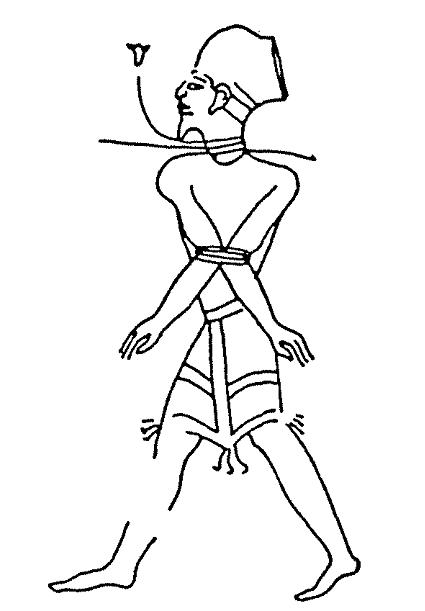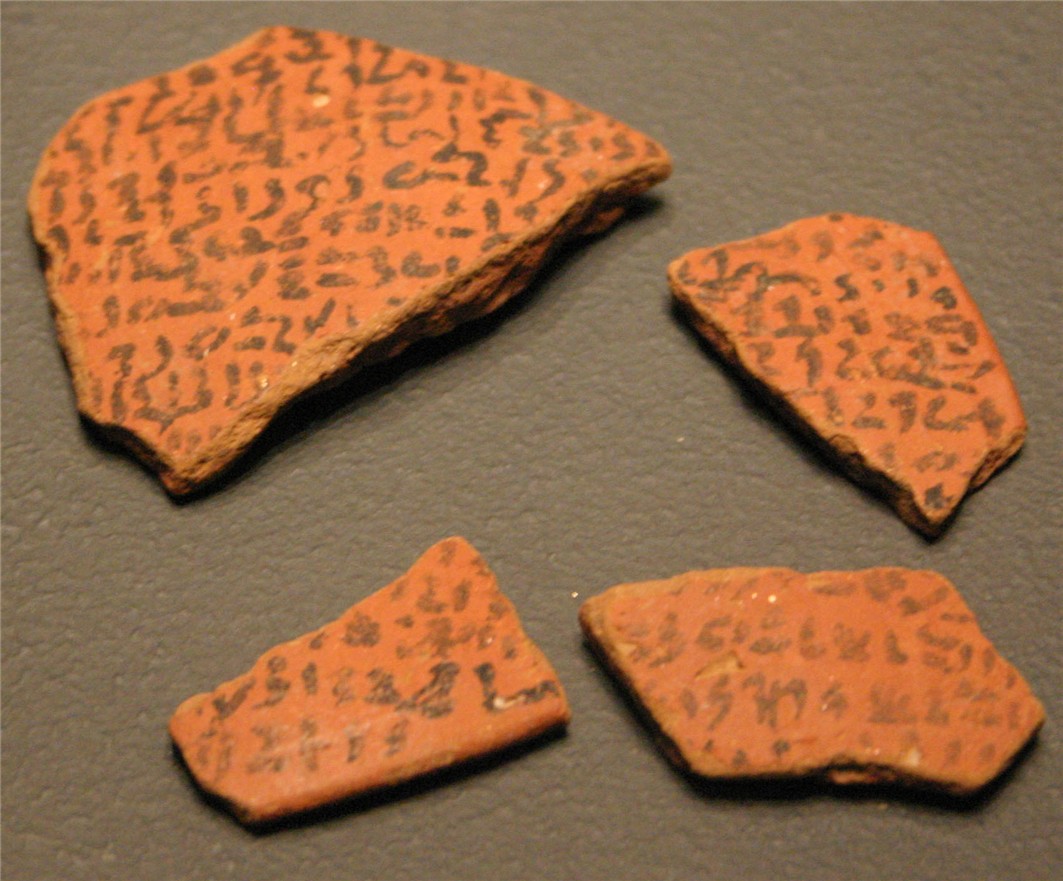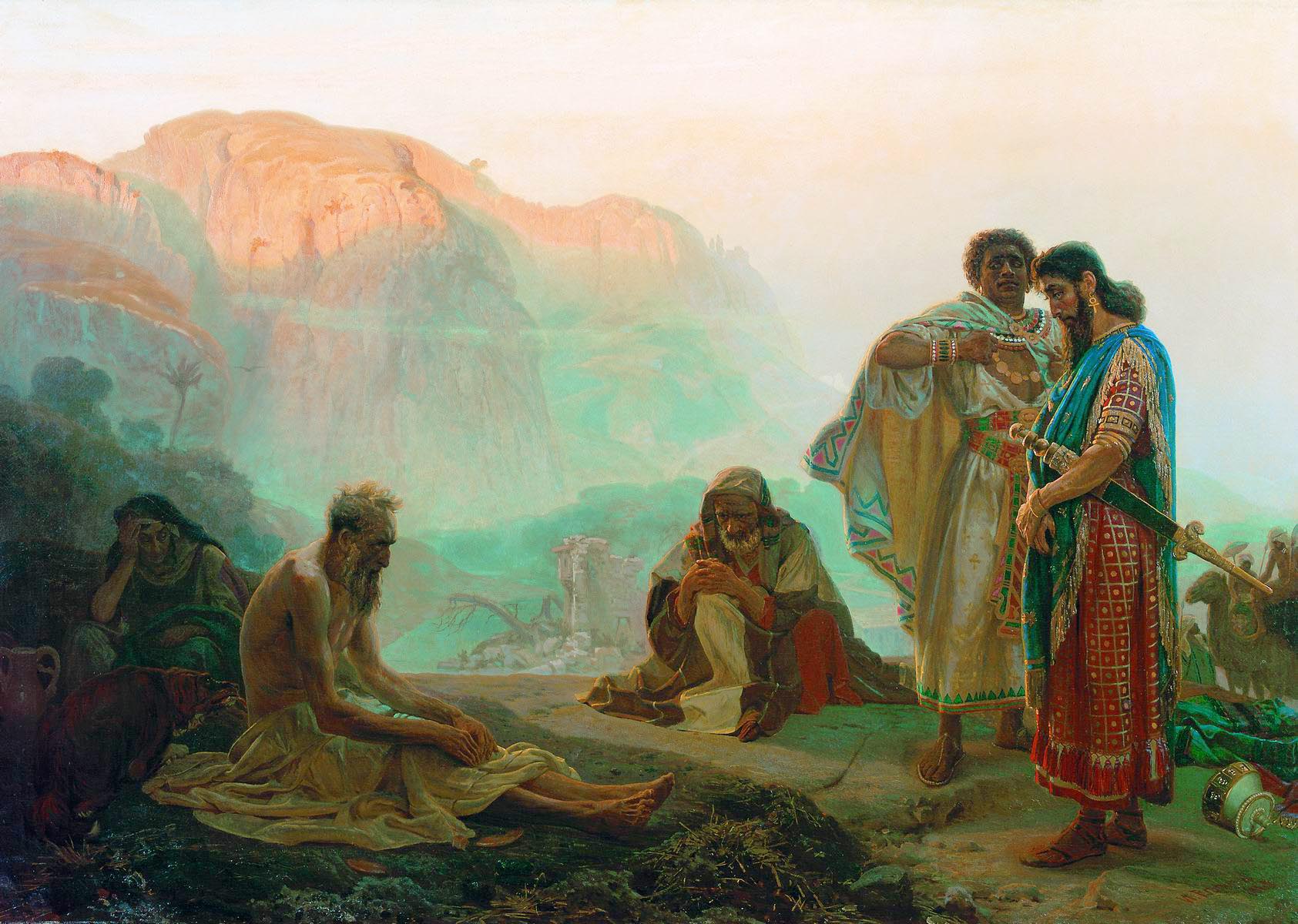|
Shutu
Shutu or Sutu is the name given in ancient Akkadian language sources to certain nomadic groups of the Trans-Jordanian highlands, extending deep into Mesopotamia and Southern Iraq. Many scholars have speculated that "Shutu" may be a variant of the Egyptian term ''Shasu''. An Egyptian execration text of the 17th century BCE refers to an "Ayyab" (possibly a variant form of the name Job) as king of the Shutu. Some scholars have tenuously identified the Shutu as the progenitors of the Moabites and Ammonites. See also * Ayyab Ayyab was a ruler of Aštartu (present day Tell Ashtara) south of Damascus. According to the Amarna letters, cities/city-states and their kings in the region — just like countries to the north, such as Hatti of the Hittites, fell prey to a w ... * Habiru * Suteans Bibliography * Baikie, James. ''The Amarna Age: A Study of the Crisis of the Ancient World.'' University Press of the Pacific, 2004. * Cohen, Raymond and Raymond Westbrook (eds.). ''Amarn ... [...More Info...] [...Related Items...] OR: [Wikipedia] [Google] [Baidu] |
Habiru
Habiru (sometimes written as Hapiru, and more accurately as ʿApiru, meaning "dusty, dirty"; Sumerian: 𒊓𒄤, ''sagaz''; Akkadian: 𒄩𒁉𒊒, ''ḫabiru'' or ''ʿaperu'') is a term used in 2nd-millennium BCE texts throughout the Fertile Crescent for people variously described as rebels, outlaws, raiders, mercenaries, bowmen, servants, slaves, and laborers. Hapiru, Habiru, and Apiru In the time of Rim-Sin I (1822 BCE to 1763 BCE), the Sumerians knew a group of Aramaean nomads living in southern Mesopotamia as SA.GAZ, which meant "robbers". The later Akkadians inherited the term, which was rendered in their phonetic system as ''Habiru'', more properly ''ʿApiru''. The term occurs in hundreds of 2nd millennium BCE documents covering a 600-year period from the 18th to the 12th centuries BCE and found at sites ranging from Egypt, Canaan and Syria, to Nuzi (near Kirkuk in northern Iraq) and Anatolia (Turkey). Not all Habiru were murderers and robbers: in the 18th century B ... [...More Info...] [...Related Items...] OR: [Wikipedia] [Google] [Baidu] |
Shasu
The Shasu ( from Egyptian ''šꜣsw'', probably pronounced ''Shasw'') were Semitic-speaking cattle nomads in the Southern Levant from the late Bronze Age to the Early Iron Age or the Third Intermediate Period of Egypt. They were organized in clans under a tribal chieftain, and were described as brigands active from the Jezreel Valley to Ashkelon and the Sinai. Some scholars link the Israelites and YHWH with the Shasu. Etymology The name's etymon may be Egyptian ''šꜣsw'', which originally meant "those who move on foot". Levy, Adams, and Muniz report similar possibilities: an Egyptian word that means "to wander", and an alternative Semitic one with the meaning "to plunder". History The earliest known reference to the Shasu occurs in a 15th-century BCE list of peoples in the Transjordan region. The name appears in a list of Egypt's enemies inscribed on column bases at the temple of Soleb built by Amenhotep III. Copied later in the 13th century BCE either by Seti I or by Rames ... [...More Info...] [...Related Items...] OR: [Wikipedia] [Google] [Baidu] |
Execration Text
Execration texts, also referred to as proscription lists, are ancient Egyptian hieratic texts, listing enemies of the pharaoh, most often enemies of the Egyptian state or troublesome foreign neighbors. The texts were most often written upon statuettes of bound foreigners, bowls, or blocks of clay or stone, which were subsequently destroyed. The ceremonial process of breaking the names and burying them was intended to be a sort of sympathetic magic that would affect the persons or entities named in the texts. The fragments were usually placed near tombs or ritual sites. This practice was most common during times of conflict with the Asiatic neighbors of Egypt. Historical periods of execration texts Execration texts are attested from the late Old Kingdom ( 2686–2160 BCE) up into the New Kingdom (c. 1550–1069). The earliest execration texts date to the 6th dynasty (24th–22nd century BCE) during Egypt's Old Kingdom. They are statuettes made from unbaked clay and fashioned int ... [...More Info...] [...Related Items...] OR: [Wikipedia] [Google] [Baidu] |
Ayyab
Ayyab was a ruler of Aštartu (present day Tell Ashtara) south of Damascus. According to the Amarna letters, cities/city-states and their kings in the region — just like countries to the north, such as Hatti of the Hittites, fell prey to a wave of attacks by Habiru raiders. The Amarna correspondence corpus covers a period from 1350– 1335 BC. Another ruler of Aštartu cited in the Amarna letters is Biridašwa. The letters do not clearly indicate their title, leading some scholars to describe them as kings of Damascus (Dimašqu) while others believe they were high Egyptian officials, possibly mayors.Wayne Thomas Pitard''Ancient Damascus: A Historical Study of the Syrian City-State from Earliest Times Until Its Fall to the Assyrians in 732 B.C.E.''Eisenbrauns, 1987. p. 67. Ayyab's letter EA 364 Ayyab is the author of only one letter to the Egyptian pharaoh, letter EA 364-( EA for 'el Amarna'). Title: ''Justified war'' :To the king, my lord: Message of ''Ayyab'', your servant. ... [...More Info...] [...Related Items...] OR: [Wikipedia] [Google] [Baidu] |
Suteans
The Suteans (Akkadian: ''Sutī’ū'', possibly from Amorite: ''Šetī’u'') were a Semitic people who lived throughout the Levant, Canaan and Mesopotamia during the Old Babylonian period. Unlike Amorites, they were not governed by a king. They were famous in Semitic epic poetry for being fierce nomadic warriors. History During the reign of Zimri-Lim (c. 1775–1761), they inhabited the vicinity of Terqa. They are mentioned in eight of the 382 Amarna letters. Like the Habiru, they traditionally worked as mercenaries, and were sometimes called Ahlamu. They are listed in documents from the Middle Assyrian Empire (1395-1075 BC) as being extant in the Amorite city of Emar, in what is now northeast Syria. Together with other Semitic peoples; the Chaldeans and Arameans, they overran swaths of Babylonia c. 1100 BC. They were eventually conquered by Assyria, along with the rest of Babylonia. Middle Bronze One of the earliest known references to Suteans comes from a report of a Sutean ... [...More Info...] [...Related Items...] OR: [Wikipedia] [Google] [Baidu] |
Akkadian Language
Akkadian (, Akkadian: )John Huehnergard & Christopher Woods, "Akkadian and Eblaite", ''The Cambridge Encyclopedia of the World's Ancient Languages''. Ed. Roger D. Woodard (2004, Cambridge) Pages 218-280 is an extinct East Semitic language that was spoken in ancient Mesopotamia ( Akkad, Assyria, Isin, Larsa and Babylonia) from the third millennium BC until its gradual replacement by Akkadian-influenced Old Aramaic among Mesopotamians by the 8th century BC. It is the earliest documented Semitic language. It used the cuneiform script, which was originally used to write the unrelated, and also extinct, Sumerian (which is a language isolate). Akkadian is named after the city of Akkad, a major centre of Mesopotamian civilization during the Akkadian Empire (c. 2334–2154 BC). The mutual influence between Sumerian and Akkadian had led scholars to describe the languages as a '' Sprachbund''. Akkadian proper names were first attested in Sumerian texts from around the mid 3rd-mi ... [...More Info...] [...Related Items...] OR: [Wikipedia] [Google] [Baidu] |
Nomad
A nomad is a member of a community without fixed habitation who regularly moves to and from the same areas. Such groups include hunter-gatherers, pastoral nomads (owning livestock), tinkers and trader nomads. In the twentieth century, the population of nomadic pastoral tribes slowly decreased, reaching an estimated 30–40 million nomads in the world . Nomadic hunting and gathering—following seasonally available wild plants and game—is by far the oldest human subsistence method. Pastoralists raise herds of domesticated livestock, driving or accompanying them in patterns that normally avoid depleting pastures beyond their ability to recover. Nomadism is also a lifestyle adapted to infertile regions such as steppe, tundra, or desert, ice and sand, where mobility is the most efficient strategy for exploiting scarce resources. For example, many groups living in the tundra are reindeer herders and are semi-nomadic, following forage for their animals. Sometimes also described as ... [...More Info...] [...Related Items...] OR: [Wikipedia] [Google] [Baidu] |
Transjordan (region)
Transjordan, the East Bank, or the Transjordanian Highlands ( ar, شرق الأردن), is the part of the Southern Levant east of the Jordan River, mostly contained in present-day Jordan. The region, known as Transjordan, was controlled by numerous powers throughout history. During the early modern period, the region of Transjordan was included under the jurisdiction of Ottoman Syrian provinces. After the Great Arab Revolt against Ottoman rule during the 1910s, the Emirate of Transjordan was established in 1921 by Hashemite Emir Abdullah I of Jordan, Abdullah, and the Emirate became a British protectorate. In 1946, the Emirate achieved independence from the British and in 1949 the country changed its name to the "Hashemite Kingdom of Jordan", after the Jordanian annexation of the West Bank following the 1948 Arab–Israeli War. Name The prefix ''trans-'' is Latin and means "across" or beyond, and so "Transjordan" refers to the land ''on the other side of'' the Jordan River. The ... [...More Info...] [...Related Items...] OR: [Wikipedia] [Google] [Baidu] |
Mesopotamia
Mesopotamia ''Mesopotamíā''; ar, بِلَاد ٱلرَّافِدَيْن or ; syc, ܐܪܡ ܢܗܪ̈ܝܢ, or , ) is a historical region of Western Asia situated within the Tigris–Euphrates river system, in the northern part of the Fertile Crescent. Today, Mesopotamia occupies modern Iraq. In the broader sense, the historical region included present-day Iraq and Kuwait and parts of present-day Iran, Syria and Turkey. The Sumerians and Akkadians (including Assyrians and Babylonians) originating from different areas in present-day Iraq, dominated Mesopotamia from the beginning of written history () to the fall of Babylon in 539 BC, when it was conquered by the Achaemenid Empire. It fell to Alexander the Great in 332 BC, and after his death, it became part of the Greek Seleucid Empire. Later the Arameans dominated major parts of Mesopotamia (). Mesopotamia is the site of the earliest developments of the Neolithic Revolution from around 10,000 BC. It has been identi ... [...More Info...] [...Related Items...] OR: [Wikipedia] [Google] [Baidu] |
Iraq
Iraq,; ku, عێراق, translit=Êraq officially the Republic of Iraq, '; ku, کۆماری عێراق, translit=Komarî Êraq is a country in Western Asia. It is bordered by Turkey to Iraq–Turkey border, the north, Iran to Iran–Iraq border, the east, the Persian Gulf and Kuwait to the southeast, Saudi Arabia to the south, Jordan to Iraq–Jordan border, the southwest and Syria to Iraq–Syria border, the west. The Capital city, capital and largest city is Baghdad. Iraq is home to diverse ethnic groups including Iraqi Arabs, Kurds, Iraqi Turkmen, Turkmens, Assyrian people, Assyrians, Armenians in Iraq, Armenians, Yazidis, Mandaeans, Iranians in Iraq, Persians and Shabaks, Shabakis with similarly diverse Geography of Iraq, geography and Wildlife of Iraq, wildlife. The vast majority of the country's 44 million residents are Muslims – the notable other faiths are Christianity in Iraq, Christianity, Yazidism, Mandaeism, Yarsanism and Zoroastrianism. The official langu ... [...More Info...] [...Related Items...] OR: [Wikipedia] [Google] [Baidu] |
Egyptian Language
The Egyptian language or Ancient Egyptian ( ) is a dead language, dead Afroasiatic languages, Afro-Asiatic language that was spoken in ancient Egypt. It is known today from a large Text corpus, corpus of surviving texts which were made accessible to the modern world following the decipherment of ancient Egyptian scripts, decipherment of the ancient Egyptian scripts in the early 19th century. Egyptian is one of the List of languages by first written accounts, earliest written languages, first being recorded in the Egyptian hieroglyphs, hieroglyphic script in the late 4th millennium BC. It is also the longest-attested human language, with a written record spanning over 4000 years. Its classical language, classical form is known as Middle Egyptian, the vernacular of the Middle Kingdom of Egypt which remained the literary language of Egypt until the Egypt (Roman province), Roman period. By the time of classical antiquity the spoken language had evolved into Demotic (Egyptian), Dem ... [...More Info...] [...Related Items...] OR: [Wikipedia] [Google] [Baidu] |
Job (Biblical Figure)
Job ( ; he, אִיּוֹב – ''Īyyōḇ''; gr, Ἰώβ – ''Iṓb'') is the central figure of the Book of Job in the Bible. In rabbinical literature, Job is called one of the prophets of the Gentiles. In Islam, Job ( ar, أيوب, translit= ''Ayyūb'') is also considered a prophet. Job is presented as a good and prosperous family man who is suddenly beset with horrendous disasters that take away all he holds dear—a scenario intended to test Job's faith in God. Struggling mightily to understand this situation, Job reflects on his despair but consistently remains devout. In the Hebrew Book of Job The Hebrew Book of Job is part of Ketuvim ("Writings") of the Hebrew Bible. Not much is known about Job based on the Masoretic Text. The characters in the Book of Job consist of Job, his wife, his three friends (Bildad, Eliphaz, and Zophar), a man named Elihu, God, and angels (one of whom is called Satan, which means 'Adversary'). It begins with an introduction to Jo ... [...More Info...] [...Related Items...] OR: [Wikipedia] [Google] [Baidu] |







